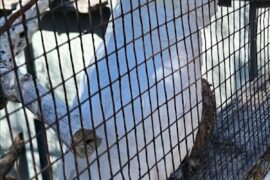Embarking on the Birds and the Bees Conversation: A Parent’s Primer
Hey there, Super Parents! Are you feeling a tad fluttery about having the ‘birds and the bees’ chat with your little ones? Worry no more! You’re about to embark on an incredible journey to not only enlighten your child but to strengthen your bond through open and healthy communication. Let’s spread our wings together and dive into the beautiful world of this time-honored conversation.
What Does “Birds and the Bees” Mean, Anyway?
Before we soar high, it’s crucial to understand what we’re talking about. The phrase “birds and the bees” is a gentle, euphemistic way to talk about reproduction and sex with young children. It’s a term wrapped in the innocence of nature’s way of explaining how all creatures bring new life into the world. Simply put, it’s Parenting 101 for introducing the facts of life in an age-appropriate manner.
Why the Birds and the Bees?
Origin stories differ, but it’s agreed that birds symbolize the whole nesting and egg-laying process, while the busy bees pollinate flowers, hinting at the necessity of a male and female role in reproduction. Using these natural metaphors makes an otherwise complex and potentially awkward topic a little lighter and more digestible for young minds.
Timing is Everything: When to Have the Talk
Let’s get real, timing can be a tough call. Every child develops at their own pace, and their curiosity about where babies come from can bloom at different stages. There’s no one-size-fits-all age, but typically, the pre-school years are ripe for planting the seeds of basic understanding. Keep an eye out for natural cues—questions may pop up from school discussions, television shows, or simply observing nature in action.
What Made the Chicken Cross the Road? Curiosity!
Children are natural-born question machines, and their curiosity can lead to some pretty profound ponderings. When they start asking about where babies come from or why animals are pairing up in the spring, that’s your green light. They’re ready for a gentle introduction to the wonders of life!
Preparation is Key: How to Get Ready for the Talk
Gearing up for the ‘big talk’? Here are a few colorful feathers to add to your cap:
- Brush Up on the Basics: Refresh your understanding of the reproductive process. Kids are bound to ask questions you might not expect, and you’ll want to stay two hops ahead.
- Stay Age-Appropriate: Tailor the depth of information you share to your child’s age and maturity level. Simplify where necessary, and avoid overwhelming them with all the details at once.
- Use Resources: There are fantastic books and educational resources designed for kids on this topic. They can be wonderful conversation starters and can offer visual aids to help explain the concepts.
- Practice Makes Perfect: It’s okay to rehearse a bit before the talk. Run through what you want to say and anticipate possible questions. A little practice can steady those nerves.
Above all, remember: this isn’t a one-and-done chat. It’s the beginning of a lifelong dialogue about health, relationships, and respect for others. So take a deep breath, give yourself a pat on the back for tackling an essential parenting milestone, and let’s flap into the first steps of demystifying the birds and the bees! With care, patience, and a touch of humor, this can be a rewarding experience that sets the tone for your child’s understanding of the natural world and their bodies.
Stay tuned, as we’ll next explore how to initiate the conversation, answer tricky questions, and foster a supportive atmosphere that encourages open dialogue for years to come.

5 Crucial Insights for Parents Preparing for ‘The Birds and the Bees’ Talk
Brace yourselves for a wonderfully winged adventure as we navigate the essentials every parent should know before initiating the ‘birds and the bees’ dialogue!
1. Knowledge is Power: Educate Yourself First
Before you set flight on this teaching moment, make sure your own understanding is crystal clear. This doesn’t just mean the physical aspects of reproduction but also involves emotional intelligence and relationship dynamics. Reviewing human biology and reading up on recent articles or books about childhood development will help you feel confident. After all, the more you know, the better you can guide your fledgling through their questions.
2. Embrace a Positive Attitude: Encourage Openness
Children can often sense apprehension, so tackle your own discomfort ahead of time. Approach the topic with positivity, emphasizing that discussing natural processes is healthy and normal. Your openness will set a precedent, normalizing conversations around their body and relationships which can be absolutely vital as they grow older. Remember, if you’re approachable now, they’re more likely to come to you with their big questions later!
3. Cultivate an Environment of Trust: It’s About More Than Just Facts
While the details of the ‘birds and the bees’ are important, what’s equally vital is establishing an environment where your child feels safe and trusted. This means being patient, non-judgmental, and empathetic to their inquiries. Make sure they understand it’s okay to ask anything—even if they think it might be embarrassing. This trust-building helps foster a sanctuary of honest communication for the future.
4. Keep the Conversation Ongoing: It’s a Journey, Not a Destination
Brace yourself – there might be inadvertent giggles, blushes, or a rapid change of subject, but that’s perfectly okay. The first talk is just the initial flutter of wings; true understanding will take time and several conversations. Don’t cram in all the information in one go; instead, keep the discussion evolving as they grow. Be prepared for follow-up questions and use real-life situations to revisit the topic naturally, making it part of ongoing development.
5. Be Prepared to Listen: Their Questions Will Guide You
While you may have an outline of what you intend to convey, the true direction of the conversation should be guided by the child’s questions. They may have heard things from peers or other sources, so listening is key to understanding their current knowledge and perspectives. Make sure to address any misconceptions and fill in the gaps without necessarily oversharing details beyond their current need or comprehension level.
Finally, remember, dear parents, this is your opportunity to frame a healthy mindset about bodies, reproduction, and relationships. It’s a chance to instill respect, knowledge, and maturity in your little one. As you wing through this rite-of-passage together, keep the dialogue informative, age-appropriate, and, most importantly, filled with care. Your little nestlings will thank you for the loving wisdom you impart as they mature into wise owls of their own!
With your nest now cozily prepped with feathers of knowledge and twigs of wisdom, take heart in knowing that you’re fully equipped for the beautiful unfolding of ‘the birds and the bees’ talk. Flying into this natural aspect of life can be as easy as a breeze when tackled with preparation and love. So puff out your chest, spread those caring wings, and lovingly guide your little fledgling with each tender chirp of curiosity.
Fostering this environment of honesty and openness does not only cater to the immediate curiosity of your child but also lays the cornerstone of their future self. The foundations you lay now are vital stepping stones that build towards an adulthood rich in respect, understanding, and compassion. Remember, in this family aviary of love, every question is a golden opportunity to instill values and instigate growth.
See more great Things to Do with Kids in New Zealand here. For more information see here
Disclaimer
The articles available via our website provide general information only and we strongly urge readers to exercise caution and conduct their own thorough research and fact-checking. The information presented should not be taken as absolute truth, and, to the maximum extent permitted by law, we will not be held liable for any inaccuracies or errors in the content. It is essential for individuals to independently verify and validate the information before making any decisions or taking any actions based on the articles.




